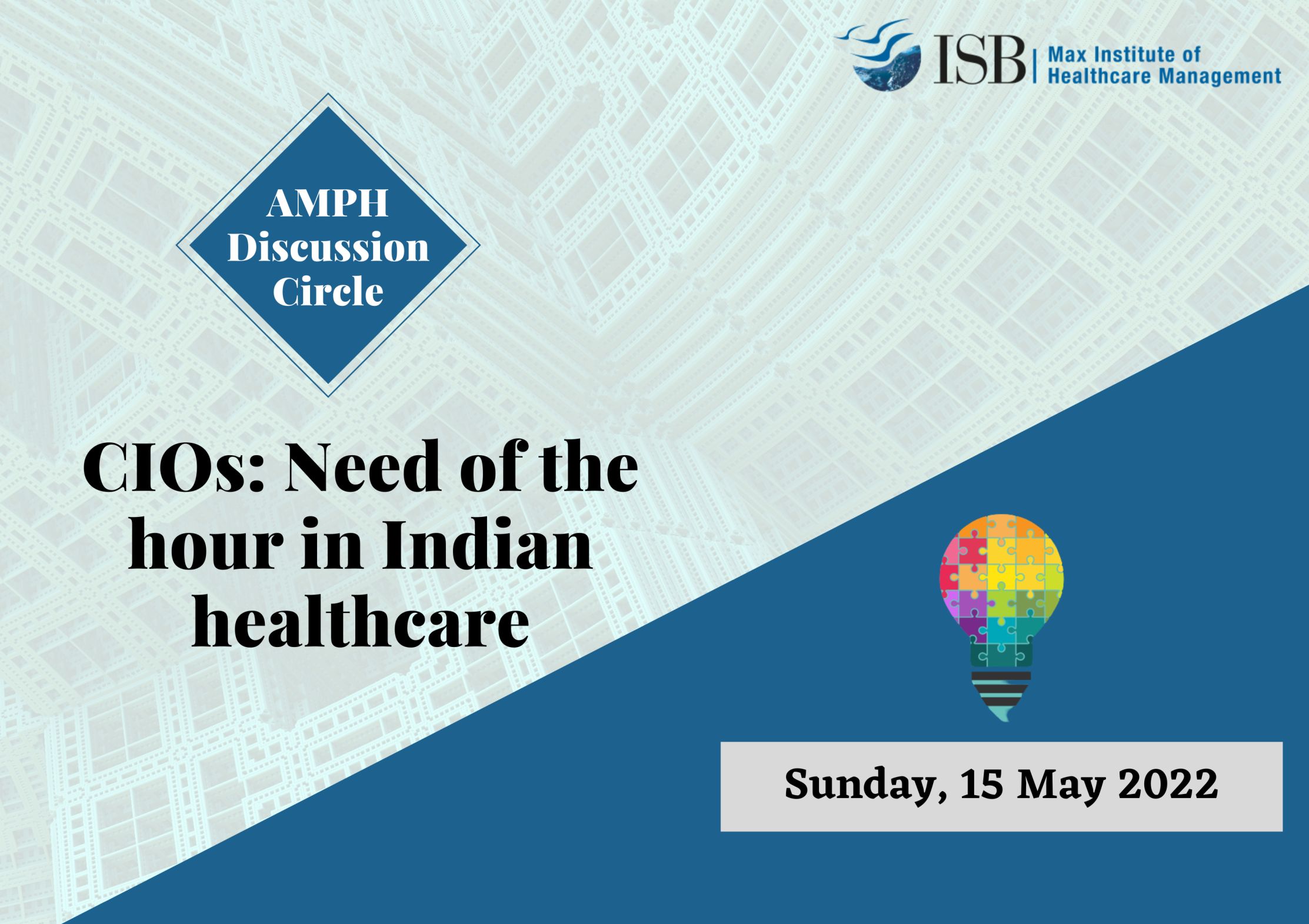
Innovation is the very core of all businesses. Over the past few years, there has been an increase in the demand for innovation in hospitals and healthcare organisations as well. But, what does a Chief Innovation Officer (CIO) bring to the table? How are they different from the CEOs/COOs? How does having a CIO benefit the patients and how can a CIO bring a culture of innovation framework into the organisational culture in the healthcare ecosystem?
AMPH Co 2022 students Shilpa Veerapaneni and Dr. Raghavendra Kumar Gudla invited experts and industry leaders to share their opinions and insights on “CIOs: Need of the hour in healthcare” in the AMPH Discussion Circle hosted by the Max Institute of Healthcare Management.
Key insights from the discussion
- With the lack of interoperability, duplication of services, shortage of doctors/nurses, unequal distribution, and wastage of vaccines and medicines, there is a strong need for CIOs in government healthcare projects. More so in resource-constrained settings and developing countries like India.
- The GoI has already taken several necessary steps like launching the Ayushman Bharat Digital Mission (ABDM) for interoperability, e-sanjeevani for teleconsultations and wellness centres. However, this transformation will only grow in the future and will require CIOs to drive its successful implementation.
- A revised executive portfolio such as CIOs for central and state governments’ healthcare schemes can help cater to the needs of beneficiaries and ensure less pilferage on the economic front. Thus, akin to ‘return on investment’, a ‘return on innovation’ can be quantified to provide value for the public money spent on the development and operation of the healthcare ecosystem.
- The clinical side of healthcare in India has seen rapid development over the past few decades. Still, the enabling ecosystem to deliver quality, value-based healthcare should happen only with domain experts to build suitable systems and processes that can help fuel commercial viability.
- With high operating and financial leverage combined with high revenue volatility, many larger hospitals operate on the brink of sustainability and cannot focus on growth. In such scenarios, a CIO can focus on financial innovation which revolves around using technology and innovation in the revenue cycle to reduce costs, lean implementation, and increase revenue to provide value-based care.
- In a highly competitive scenario with the rise in costs and skewed margins, CIOs can look at digitising the processes and building cutting-edge AI-based products, which reduce the price and improve overall patient experience, quicker diagnosis, and high quality of care.
- The pandemic has forced us to rethink healthcare operating models with self-innovation. Though concepts like telehealth existed before, the pandemic made everyone realise the importance of the same; the CIO should constantly challenge the status quo and drive innovation in an organisation.
- CIO can bring a change in operational efficiency for the primary healthcare system, ER, and digitalisation of electronic health records which can indirectly influence patient health outcomes by reducing frontline workers’ time and effort through forward-thinking solutions.
- An upgradation of any pre-existing healthcare admin portfolio to a CIO who can spark the creativity at all levels of an organisation and encourage ideas via brainstorming and using tools such as the Six Thinking Hats
- In healthcare, mental health issues are ascending and thus innovative ideas are needed to strengthen the bonding between service providers and the consumers. These innovations may come through spirit fitness like intuitive and telepathy so that CIO can give new wisdom to healthcare.
- A CIO in both smaller and larger healthcare organisations can bring a change for an improved patient experience by implementing best practices (such as welcoming new ideas and innovations from the staff), emphasis on healthcare management, and thinking outside the box (where a minuscule idea could turn into a million-dollar one), scanning the markets for new possible entrants, and sustainable funding.
- An organisation needs a CIO with a cohesive and meaningful relationship with the CEO.
- CIO today is considered the centrifugal point of digitalisation and cultural shift.
- A CIO’s view of innovation doesn’t necessarily mean digital. Every organization has multiple processes that could be performed uniquely or innovatively to improve efficiency or reduce TAT. In addition, every organization has a distinct legacy and culture that is resistant to change. Hence, it is crucial to implement the cultural innovation or transformation first and then slowly transition to more complex ones.
- A CIO can reduce the valley of death between ideation and implementation in any healthcare organisation with proper resource allocation, engaging stakeholders from varied organisational levels, identifying various benchmarks, and extensive knowledge of government healthcare regulations.
Moderated by the students of AMPH Co 2022, the Max Institute of Healthcare Management hosts the AMPH Discussion Circle on the third Sunday of every month on its LinkedIn page. Click here to go to this discussion thread.

